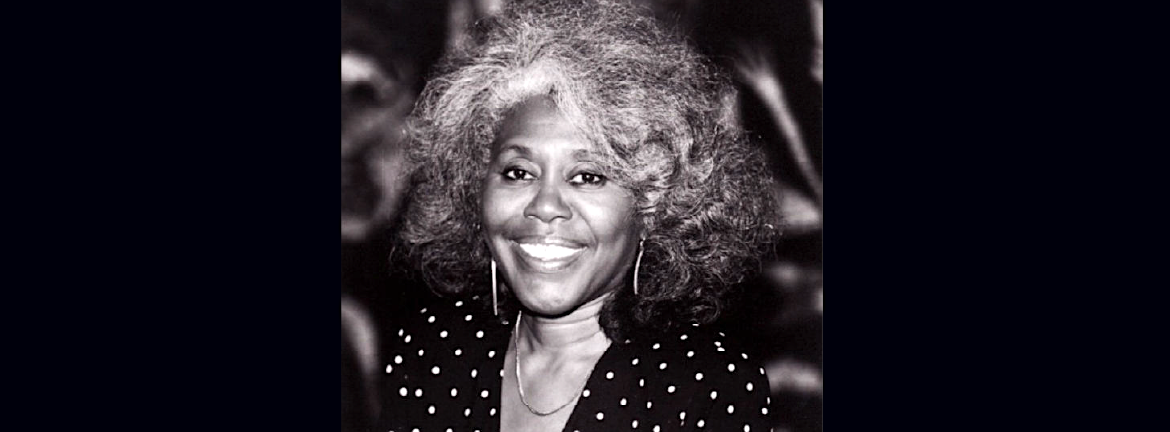Written by Garlia Cornelia Jones for THE ARTISTS FORUM MAGAZINE
Edited by Amos White V
Photos: Courtesy of the National Black Theatre
DR. BARBARA ANN TEER: HER LAST STANDING OVATION
NEW YORK, NY (July 29, 2008) The Village of Harlem gathered Monday, July 28, to celebrate the life of National Black Theatre founder, beloved spirit, community member, activist, mother, and friend, Dr. Barbara Ann Teer, who died last Monday, July 21st, age 71.
Walking west on 125th Street from 5th Avenue, with the early afternoon sun shining above, passers-by might have marveled at the parade, which included horse drawn carriages, an elephant and African drums. Friends, family and the elite of the Black Theatre community marched from Teer’s beloved National Black Theatre to The Riverside Church in purple and white. The crowd danced, chanted, cheered and released doves in front of the church before ascending the stairs for the three-o’clock ceremony.
Musical and dance tributes through the nearly four hour long ceremony included Roberta Flack, an Alvin Ailey excerpt from Revelations, singers Debbie Blackwell-Cook, Ebony Jo-Ann, Carol Maillard, and a final haunting dance performance by Dyane Harvey, choreographed by Abdel R. Salaam.

Amidst the joy and celebratory aspects of the ceremony, the premature loss of a legend filtered through the air. Teer was undefined by boxes; she was a visionary for the Black community, moving beyond traditional theatre and using the spirit of African ancestry to create Black art.
Teer was a spiritual being and the memorial included facets of that spirituality. She traveled to Hawaii and countries in Africa, extending her family and embracing the West African Yoruba traditions that were throughout her ceremony. “[She] taught us to take God out of the sky and put God in our hearts,” read Sonia Sanchez in her poem.
Renowned educator and civil rights leader, the Rev. Dr. Eugene Callendar, who had a 40-year relationship with the late Dr. Teer, offered a final reflection: “She was more than just a human being.” Callender learned much from Teer and her spiritual ways. Callender, who also serves as the Chairman of the Senior Coordinating Committee of the Democratic National Committee, conveyed the humility she evoked from him and the spirituality he learned from Teer that he had not learned during any of his time in the seminary. Aside from artistic duties, Teer was a loving and devoted mother to a son and daughter, Omi and Sade, who comforted each other throughout the ceremony.
Woodie King, Jr., Founder and Artistic Director of the New Federal Theatre, noted that Dr. Teer spent 44 years in New York, and was only 30 years old when she began the National Black Theatre in 1968. A powerful force to be reckoned with, King spoke of her technique: “One never said ‘no’ to her. One only listened.” adding, “This is a loss that will be felt throughout the Diaspora.”
Dr. Teer’s close friend, Amiri Baraka, founder of the Black Arts Movement, and poet laureate of New Jersey stated that Teer was always focused on the community and wanted to “liberate the world from its backwardness.” Both she, King, and Teer started their work during the late 1960’s and described how they wanted to take the arts to the community and into the streets.
Together with Robert Hooks, Teer created the Group Theatre Workshop during the late 1960s, implementing an ensemble approach to acting where the relationships off stage reflected in the work on stage. Later, Hooks along with Douglass Turner Ward, founded the Negro Ensemble Company, while Teer founded the National Black Theatre. At that time, performers at the National Black Theatre were called Liberators, whose ritual theatre was to kill the oppressed person within all of us. The current site of the National Black Theatre is its original, and was intended by Teer as a “free piece of land for my people.” Teer’s son, Michael “Omi” Lythcott intends to keep it as such.
Unable to attend, Hooks wrote of the emptiness in his heart since Teer’s transition. Hattie Winston, who had flown from Hollywood, despite a broken foot, read Hooks’ message along with her own, recounting the past and how she and Teer witnessed their friends die from heroin and “from the invisibility of being young and black.”
Most recently, Dr. Teer and several other respected panelists in the black theatre community gathered on May 18th for a town hall meeting with the Coalition on Theatres of Color at the Little Schubert Theatre. Discussions ranged from grants and funding to media coverage and securing reviewers to attend and write decent reviews about the work produced by people of color. Dr. Teer was as vibrant as ever and spoke of how she used to give the criteria for the press, ensuring that they where familiar with certain aspects to look for in works by artists of color.
SERVICE HIGHLIGHTS
“Maybe she needed to start some meeting,” remarked Oscar Nominated, Ruby Dee, during her reflection at the service. Dee, who was also Broadway’s original Ruth Younger in Lorraine Hansberry’s A Raisin in the Sun, lost her husband, Ossie Davis, in February of 2005. His transition, like Teer’s was just as abrupt.
There was a consensus that too many of these calls, announcing the death of a close friend, were being made these days. “Are you sitting down?” the voice on the other end would say. Glynn Turnman, most recently nominated for an Emmy for HBO’s In Treatment, reflected on this and asked, “What’s going to happen now?” The late Dr. Teer referred to Turman has her big brother. “How you doin’ in Hollywood, big brother?” Teer would say. “Take some of that Hollywood money, bring it back to Harlem and buy some of those brownstones [and] give them away.”
Singer, actor, and professor, Avery Brooks, perhaps best known as Benjamin Sisko on Star Trek: Deep Space Nine, offered his voice, giving introductions and reading messages sent to the family. Messages included those from the New York City Council, Louis Farrakhan, and Maya Angelou, who wrote that Dr. Teer was now “listening to Baldwin” and “arguing with Sarah Wright”.

The celebration concluded with an evening fireworks display worthy of Dr. Teer’s vibrancy. The crowd gathered once again after a brief repast at The Riverside Church for friends, family, liberators and VIP guests and stood on the Riverside Drive Bridge as traffic was slowed for about twenty minutes and our beloved mentor, friend, leader and mother lit the sky one last time, enlightening our minds in all her glory. She was 71.
For more information about about the life and work of Dr. Barbara Anne Teer, visit her wikipedia page and nationalblacktheatre.org

